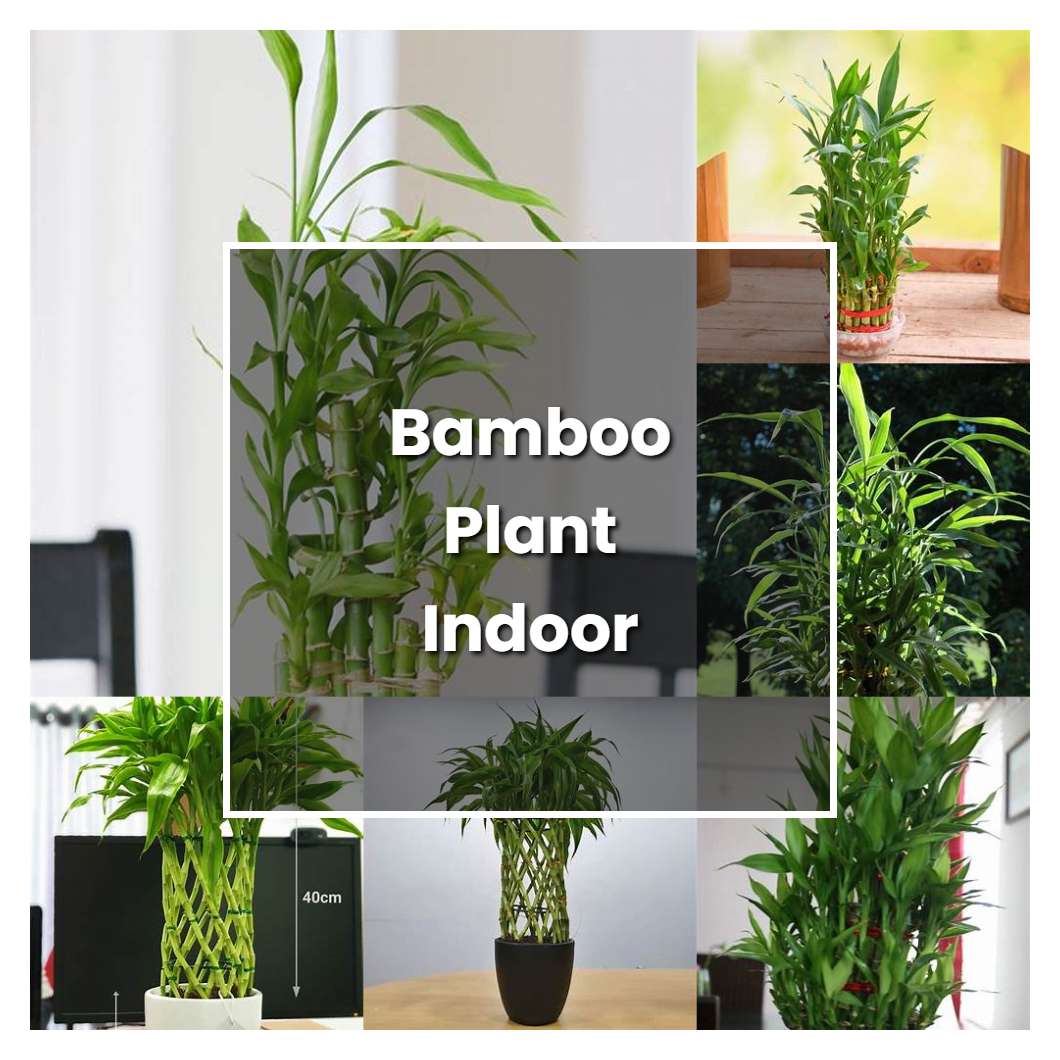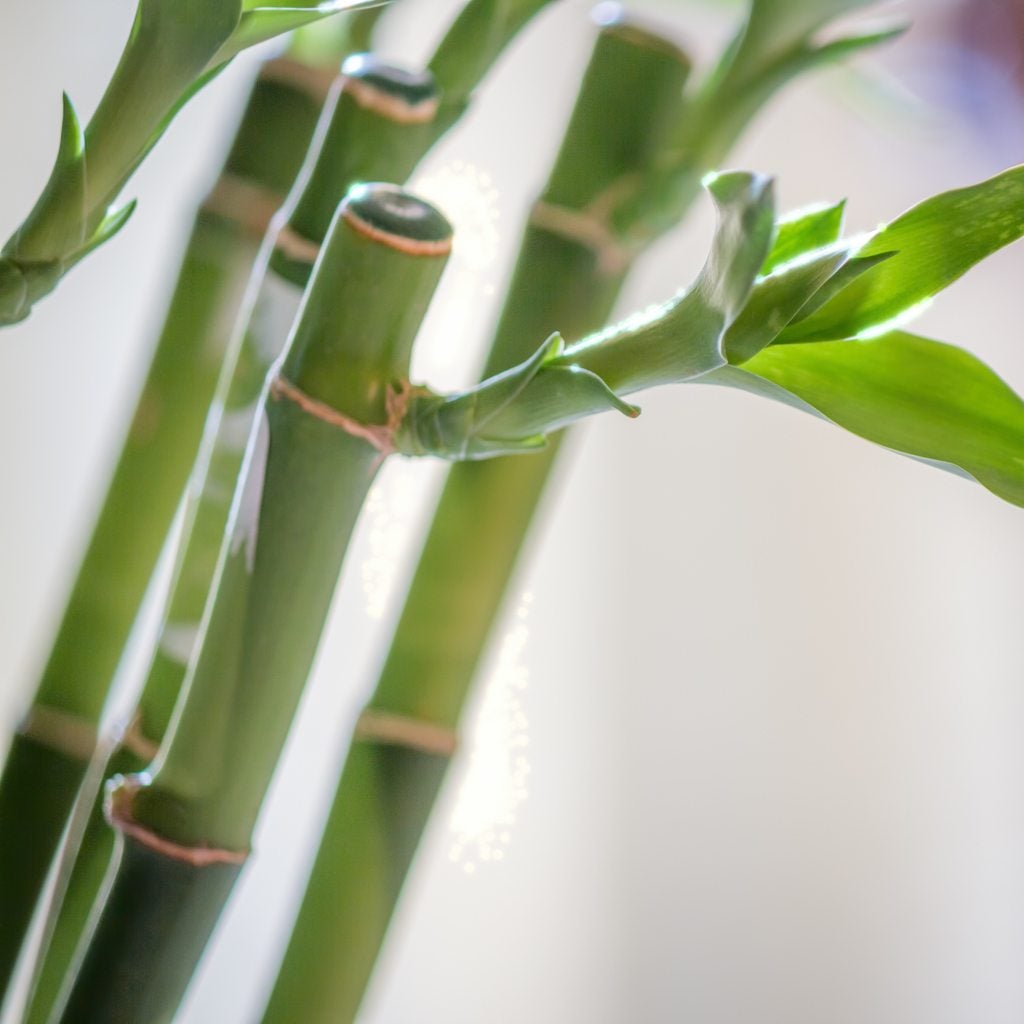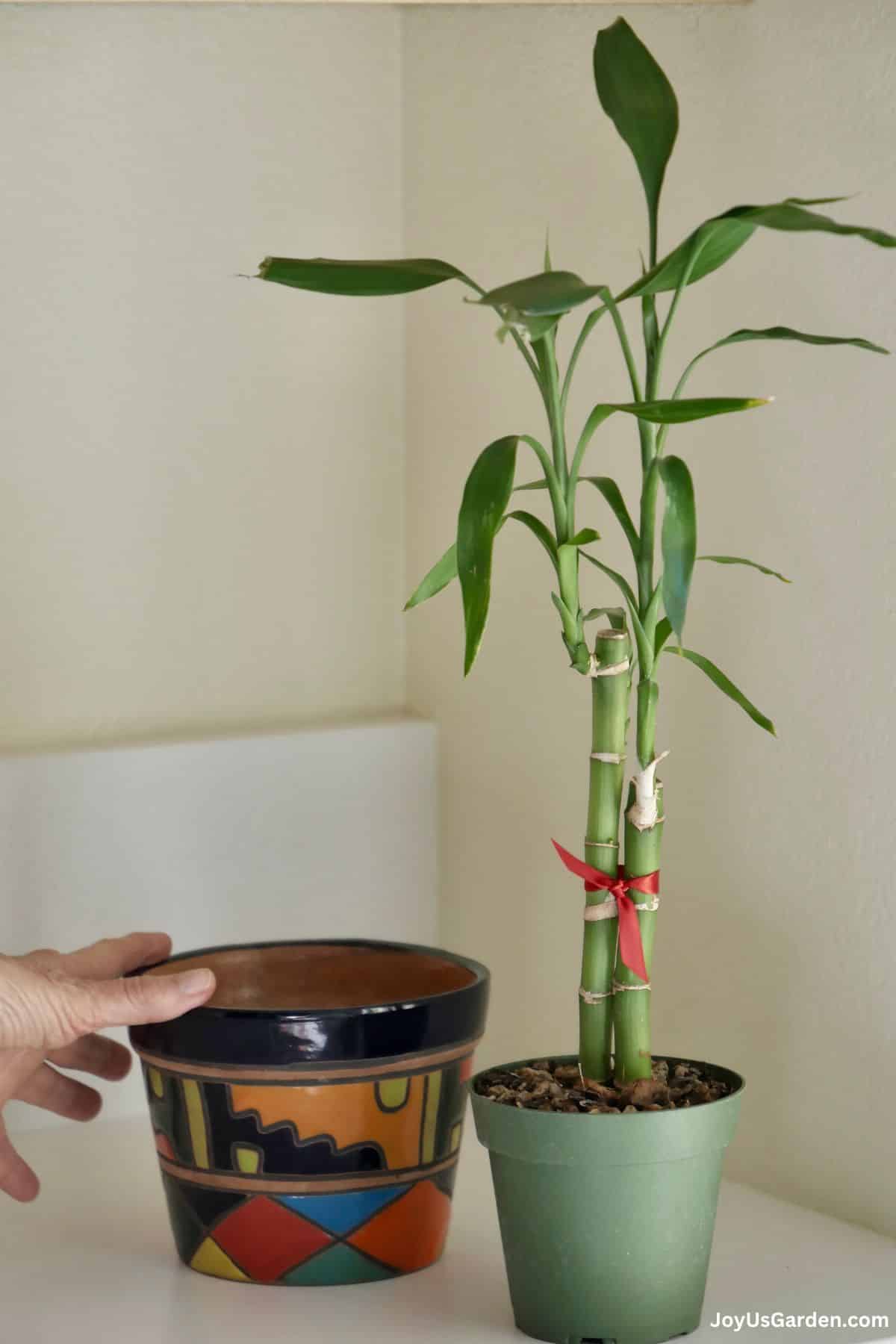Unlocking the Secrets to Thriving Indoor Bamboo Plants
Indoor bamboo plants have become increasingly popular due to their unique aesthetic appeal, air-purifying properties, and low-maintenance requirements. However, to ensure the longevity and health of these plants, it is essential to understand the basics of how to take care of a bamboo plant indoors. With proper care, indoor bamboo plants can thrive and provide a touch of natural beauty to any room.
One of the primary benefits of growing bamboo plants indoors is their ability to purify the air and improve indoor air quality. According to the NASA Clean Air Study, bamboo plants are capable of removing toxins and pollutants from the air, making them an excellent addition to any indoor space. Additionally, bamboo plants are known for their calming and soothing effects, making them a popular choice for bedrooms and meditation rooms.
Despite their many benefits, indoor bamboo plants can be finicky and require specific care to thrive. By understanding the unique needs of these plants, you can create a thriving indoor oasis that brings joy and serenity to your home. Proper care involves providing the right environment, watering, fertilizing, pruning, and training the plant. In the following sections, we will delve into the specifics of how to take care of a bamboo plant indoors, providing you with the knowledge and expertise to keep your plant healthy and thriving.
Choosing the Right Bamboo Species for Indoor Growth
With over 1,000 species of bamboo to choose from, selecting the right one for indoor growth can be a daunting task. However, by considering factors like lighting, temperature, and humidity, you can narrow down your options and choose a species that thrives in your indoor environment. Dwarf varieties like ‘Fargesia’ and ‘Borinda’ are popular choices for indoor growth, as they are compact and can tolerate low light conditions.
Compact species like ‘Pleioblastus’ and ‘Sasa’ are also well-suited for indoor growth, as they are relatively small and can be pruned to maintain a desired shape. When selecting a bamboo species for indoor growth, it’s essential to consider the mature size of the plant and choose a species that will not outgrow its container.
In addition to considering the size and growth habits of the plant, it’s also essential to think about the lighting conditions in your home. Some bamboo species, like ‘Phyllostachys’, prefer bright, indirect light, while others, like ‘Chusquea’, can tolerate low light conditions. By choosing a species that is well-suited to your indoor lighting conditions, you can ensure that your bamboo plant thrives and remains healthy.
When learning how to take care of a bamboo plant indoors, it’s also essential to consider the temperature and humidity requirements of the plant. Most bamboo species prefer daytime temperatures between 65-75°F (18-24°C) and nighttime temperatures around 55-65°F (13-18°C). They also prefer high humidity, typically above 50%. By providing the right environment and choosing a species that is well-suited to your indoor conditions, you can create a thriving indoor bamboo plant that brings beauty and serenity to your home.
How to Create a Bamboo-Friendly Indoor Environment
Creating a bamboo-friendly indoor environment is crucial for the health and well-being of your plant. Bamboo plants prefer bright, indirect light, but can tolerate low light conditions. When learning how to take care of a bamboo plant indoors, it’s essential to consider the lighting conditions in your home and choose a location that provides the right amount of light.
In addition to lighting, temperature and humidity are also critical factors to consider when creating a bamboo-friendly indoor environment. Most bamboo species prefer daytime temperatures between 65-75°F (18-24°C) and nighttime temperatures around 55-65°F (13-18°C). They also prefer high humidity, typically above 50%. To maintain the right humidity levels, you can use a humidifier or group plants together to create a microclimate.
Another important factor to consider is air circulation. Bamboo plants prefer good air circulation to prevent fungal diseases and promote healthy growth. To ensure good air circulation, keep your bamboo plant at least 6-8 inches away from any walls or surfaces.
When it comes to creating a bamboo-friendly indoor environment, the type of potting mix and container used can also make a big difference. Choose a well-draining potting mix that is specifically designed for bamboo plants, and use a container that is large enough to accommodate the plant’s root system. A container with good drainage holes will also help to prevent waterlogged soil and root rot.
Finally, consider using grow lights to supplement the natural light in your home. Grow lights can provide the necessary light spectrum and intensity to promote healthy growth and development in your bamboo plant. By following these tips and creating a bamboo-friendly indoor environment, you can help your plant thrive and enjoy its many benefits.
The Art of Watering Your Indoor Bamboo Plant
Watering is one of the most critical aspects of how to take care of a bamboo plant indoors. Bamboo plants prefer moist soil, but overwatering can be detrimental to their health. To avoid overwatering, it’s essential to check the soil moisture regularly. Stick your finger into the soil up to the first knuckle, and if the soil feels dry, it’s time to water.
Water your bamboo plant thoroughly, making sure the pot drains well to prevent waterlogged soil. The frequency of watering depends on the humidity and temperature of your home. In general, bamboo plants prefer to be watered once a week during the spring and summer months when they are actively growing. During the fall and winter months, you can reduce watering to once every 10-14 days.
In addition to watering, fertilization is also crucial for the health and growth of your bamboo plant. Use a balanced, water-soluble fertilizer that is specifically designed for bamboo plants. Dilute the fertilizer to half the recommended strength to avoid burning the roots. You can fertilize your bamboo plant once a month during the growing season, but avoid fertilizing during the winter months when the plant is dormant.
It’s also essential to monitor the pH level of the soil, as bamboo plants prefer slightly acidic to neutral soil pH (5.5-7.0). You can use a soil pH test kit to check the pH level and adjust it accordingly. By following these watering and fertilization tips, you can provide your bamboo plant with the necessary nutrients to thrive indoors.
Remember, the key to successful watering is to find a balance between keeping the soil moist and avoiding overwatering. By monitoring the soil moisture and adjusting your watering schedule accordingly, you can help your bamboo plant grow strong and healthy. With proper care and attention, your indoor bamboo plant can bring beauty and serenity to your home for years to come.
Fertilizing Your Indoor Bamboo Plant for Optimal Growth
Fertilizing is an essential part of how to take care of a bamboo plant indoors. Bamboo plants require a balanced diet of nutrients to promote healthy growth and development. When choosing a fertilizer for your indoor bamboo plant, look for a balanced, water-soluble fertilizer that contains micronutrients and macronutrients.
Micronutrients, such as iron, zinc, and boron, play a crucial role in promoting healthy growth and development in bamboo plants. Macronutrients, such as nitrogen, phosphorus, and potassium, provide the necessary energy for growth and development. A balanced fertilizer that contains both micronutrients and macronutrients will provide your bamboo plant with the necessary nutrients to thrive.
When fertilizing your indoor bamboo plant, it’s essential to follow the instructions on the fertilizer label carefully. Overfertilizing can be detrimental to the health of your plant, so it’s better to err on the side of caution. A general rule of thumb is to fertilize your bamboo plant once a month during the growing season, which is typically during the spring and summer months.
During the fall and winter months, you can reduce fertilization to once every 2-3 months. This will help to promote healthy growth and development during the growing season, while also preventing overfertilization during the dormant season.
In addition to using a balanced fertilizer, you can also use compost or manure tea to provide your bamboo plant with additional nutrients. Compost and manure tea are rich in micronutrients and macronutrients, and can help to promote healthy growth and development in your bamboo plant.
By following these fertilization tips, you can provide your indoor bamboo plant with the necessary nutrients to thrive. Remember to always follow the instructions on the fertilizer label carefully, and to err on the side of caution when fertilizing your plant.
Pruning and Training Your Indoor Bamboo Plant
Pruning and training are essential parts of how to take care of a bamboo plant indoors. Pruning helps to maintain the shape and size of the plant, promotes new growth, and removes dead or damaged culms. Training, on the other hand, helps to control the direction of growth and encourages the plant to grow in a desired shape.
To prune your indoor bamboo plant, start by removing any dead or damaged culms. Cut the culms at the base, just above a node, using a sharp pair of scissors or pruning shears. This will help to prevent the spread of disease and encourage new growth.
Next, prune any overgrown or leggy culms to maintain the shape and size of the plant. Cut the culms back to about one-third to one-half of their height, just above a node. This will help to promote new growth and encourage the plant to grow in a more compact shape.
In addition to pruning, training is also an important part of caring for your indoor bamboo plant. To train your plant, use a stake or trellis to support the culms and encourage them to grow in a desired direction. You can also use twine or wire to tie the culms to the stake or trellis, helping to control the direction of growth.
By pruning and training your indoor bamboo plant regularly, you can help to maintain its shape and size, promote new growth, and encourage it to grow in a desired shape. This will help to keep your plant healthy and thriving, and ensure that it continues to provide beauty and benefits to your indoor space.
Some other tips to keep in mind when pruning and training your indoor bamboo plant include:
- Prune your plant regularly to maintain its shape and size.
- Use a sharp pair of scissors or pruning shears to prevent spreading disease.
- Train your plant using a stake or trellis to control the direction of growth.
- Use twine or wire to tie the culms to the stake or trellis.
By following these tips and incorporating pruning and training into your regular care routine, you can help to keep your indoor bamboo plant healthy and thriving.
Pest Control and Common Problems with Indoor Bamboo Plants
Indoor bamboo plants can be susceptible to pests and diseases, which can affect their health and longevity. Some common pests that can affect indoor bamboo plants include spider mites, mealybugs, and scale. These pests can cause damage to the plant’s leaves and stems, and can also spread disease.
To control pests on your indoor bamboo plant, it’s essential to monitor the plant regularly for signs of infestation. Check the leaves and stems for any unusual growths, discoloration, or damage. If you notice any signs of pests, treat the plant with insecticidal soap or neem oil.
In addition to pests, indoor bamboo plants can also be susceptible to diseases such as root rot and leaf spot. Root rot is a common problem that can occur when the plant is overwatered, causing the roots to rot. Leaf spot is a fungal disease that can cause small, circular lesions to form on the leaves.
To prevent root rot, make sure to water your indoor bamboo plant carefully, avoiding overwatering. To prevent leaf spot, remove any infected leaves and treat the plant with a fungicide.
Other common problems that can affect indoor bamboo plants include yellowing leaves, droopy stems, and slow growth. Yellowing leaves can be caused by a lack of light, while droopy stems can be caused by a lack of water. Slow growth can be caused by a lack of nutrients or inadequate light.
By monitoring your indoor bamboo plant regularly and taking steps to prevent pests and diseases, you can help to ensure the plant’s health and longevity. Regular pruning and training can also help to promote healthy growth and prevent problems.
Some other tips to keep in mind when it comes to pest control and common problems with indoor bamboo plants include:
- Monitor your plant regularly for signs of pests and diseases.
- Treat any infestations or infections promptly.
- Water your plant carefully to prevent overwatering.
- Provide your plant with adequate light and nutrients.
- Prune and train your plant regularly to promote healthy growth.
By following these tips and taking steps to prevent pests and diseases, you can help to ensure the health and longevity of your indoor bamboo plant.
Troubleshooting Common Issues with Your Indoor Bamboo Plant
Despite proper care, indoor bamboo plants can still experience common issues that can affect their health and longevity. In this section, we will provide a troubleshooting guide for common issues with indoor bamboo plants, including yellowing leaves, droopy stems, and slow growth.
Yellowing leaves can be caused by a variety of factors, including overwatering, underwatering, and lack of light. To address yellowing leaves, check the soil moisture and adjust your watering schedule accordingly. Also, ensure that your plant is receiving sufficient light, and consider using grow lights if necessary.
Droopy stems can be caused by a lack of water or nutrients. To address droopy stems, check the soil moisture and adjust your watering schedule accordingly. Also, consider fertilizing your plant with a balanced fertilizer to provide essential nutrients.
Slow growth can be caused by a variety of factors, including lack of light, water, or nutrients. To address slow growth, ensure that your plant is receiving sufficient light, water, and nutrients. Also, consider pruning your plant to promote healthy growth and encourage new shoots.
Other common issues that can affect indoor bamboo plants include pests, diseases, and root bound conditions. To address these issues, monitor your plant regularly for signs of pests or diseases, and take action promptly if necessary. Also, consider repotting your plant in a larger container to provide more room for growth.
By following these troubleshooting tips, you can help to identify and address common issues with your indoor bamboo plant, and ensure that it continues to thrive and provide beauty and benefits to your indoor space.
Some other tips to keep in mind when troubleshooting common issues with your indoor bamboo plant include:
- Monitor your plant regularly for signs of pests or diseases.
- Adjust your watering schedule accordingly to prevent overwatering or underwatering.
- Provide your plant with sufficient light, water, and nutrients.
- Prune your plant regularly to promote healthy growth and encourage new shoots.
- Consider repotting your plant in a larger container to provide more room for growth.
By following these tips and taking action promptly when issues arise, you can help to ensure the health and longevity of your indoor bamboo plant.








